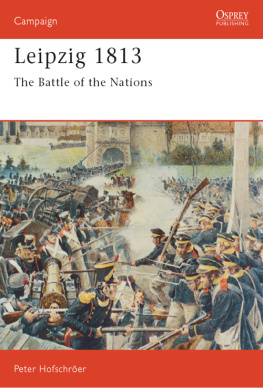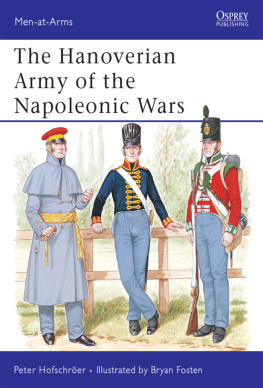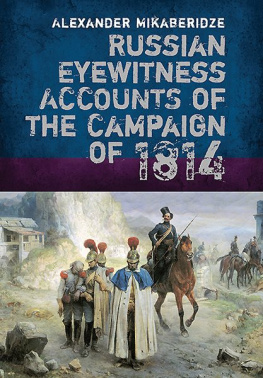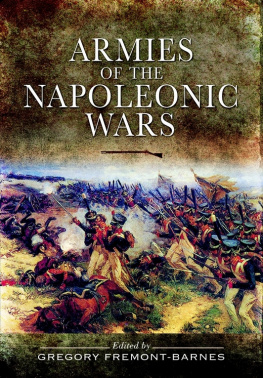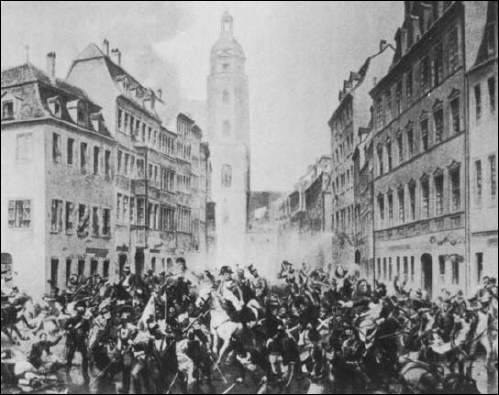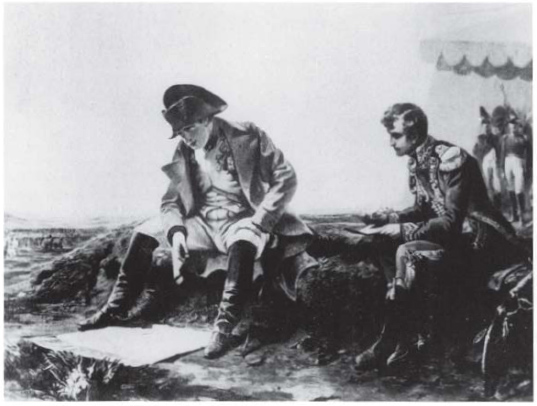Campaign 25
Leipzig 1813
The Battle of the Nations
Peter Hofschrer
Series editor Lee Johnson Consultant editor David G Chandler
CONTENTS
INTRODUCTION
The fact of the matter is that in October 1813, Napoleon met his real Waterloo at Leipzig. Those events in and around the city of Leipzig in Saxony amounted to the greatest battle of the Napoleonic Wars and resulted in the most devastating defeat suffered by the Emperor of the French. Not for nothing was this great clash of arms known as the Battle of the Nations. Approximately half a million men from most of the nations of Europe took part in this battle, and decided the fate of that continent for a generation and more. Moreover, in terms of numbers involved it was the greatest battle in history, until overshadowed by the global conflicts of this century. The events in the Low Countries in June 1815 were of lesser significance and the result of the Battle of Waterloo merely underlined the decision made by force of arms two years previously.
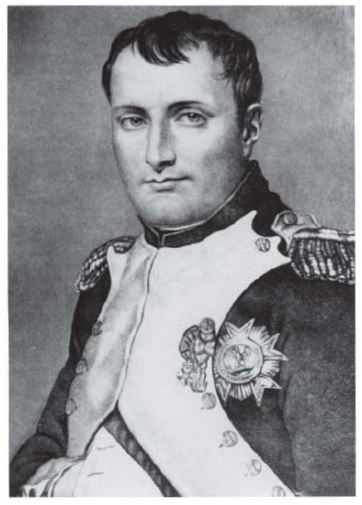
Napoleon Bonaparte. His period of rule in Europe in the early 19th century was marked by a series of wars, the scale of which were unprecedented. Not to be forgotten however are the benefits this regime brought, particularly wide-scale reforms of administration throughout Europe. From a painting by David, drawn by Bourgeois and engraved by Bertrand.
This brief outline of the Leipzig Campaign is written in the hope of stimulating the minds of those interested in the Wars of the French Revolution and Napoleonic Empire and awaken their interest in a battle that, thanks to the fateful events of autumn 1989 in which Leipzig again played a major role, is now open to the visitor from the West.
The destruction of Napoleons Grande Arme of 1812 in Russia, which had been until then the largest force of arms ever assembled, was a blow that would have finished most mortals. For Napoleon it proved merely a temporary set-back. While the rest of Europe paused to consider how to fill the power vacuum that had occurred as a result of the retreat from Moscow in the sub-zero temperatures of the winter of 1812/13, Bonaparte returned to France and set about filling it. Within weeks he had a new army ready to take the field against the coalition of forces preparing to confront him.
Meanwhile some of his reluctant allies had deserted him, notably Prussia, ruled by Frederick William III, the first to throw in his lot with Tsar Alexander of Russia. Austria, under Emperor Francis, sat on the fence and hesitated, waiting to take sides with whomever offered the best terms and prospects. Perfidious Albion was behind the scenes everywhere, offering encouragement and golden guineas to whomever would risk his throne to overthrow the arch-enemy. The rulers of Germanys smaller states were caught between popular discontent and a desire for self-preservation and loyalty to the man who had after all, made them a present of regal status. The lesser princes of Germany vacillated. Events soon forced them to make a decision and most considered loyalty to the Emperor of France expedient, at least for the time being.
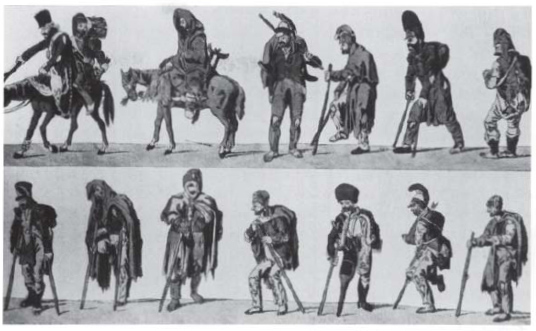
The Grande Arme returning from Russia at the beginning of 1813. This contemporary engraving showing the sorry state of the remnants of Napoleons largest army was produced by Geissler, a resident of Leipzig at that time and an eye-witness.
A later painting showing an artistically more realistic impression of the Grande Arme of 1812 on its way home. Painting by Arthur Kampf.
The armies of the King of Prussia and the Tsar of Russia took the field in the spring of 1813 against the hastily mobilized but highly motivated force of raw recruits fielded by France. Sweden, her Crown Prince a former Marshal of Napoleons, joined the war in favour of the Allies and hoped for territorial gain. It is possible that Swedens king-to-be even had a hankering for the crown of France. The other great European power, the Austrian Empire, awaited events. Vienna, as so often in her history, was a hotbed of spies and conspiracies.
The first major clash of arms of this spring campaign came within a whisker of being the decisive battle of the Napoleonic Wars. On 2 May 1813 a Prusso-Russian Army under the command of Kutusovs successor, Wittgenstein, moved against the flank of the French Army marching towards Leipzig. Neys Corps was caught asleep around the village of Gross-Grschen. His command could have been wiped out, but a determined defence and the confusion that prevailed at Allied Headquarters saved him. The chance to defeat the French corps in detail as it marched up the road from Weissenfels to Leipzig was lost and the Allies, heavily outnumbered, were compelled to retire from that corpse-strewn field in Saxony, leaving the French claiming victory even though they failed to launch a pursuit of the Allies and had suffered twice the number of casualties.
Gone was the opportunity for a Prusso-Russian alliance to defeat France unaided. The Prussian General Scharnhorst, wounded at Gross-Grschen, departed for Vienna in the hope of pushing the Austrians off their proverbial fence.
The French now had the initiative, but their lack of cavalry caused by the enormous loss of horses suffered during the Russian campaign, meant that they could do little with it. Gross-Grschen (otherwise known as Ltzen) was not an easy contest. It was clear that Napoleon, despite having the larger army, was not going to defeat this Prusso-Russian alliance with the relative ease of 18067.
Napoleon planning a battle. This painting is an interesting indication of how the Napoleonic command system functioned. He is sitting alone making his plans. Orders are then given to the clerk on his left who transcribes them and passes them on to the aides in the background. The orders are then delivered to the various sub-commanders. Such a system worked well with the smaller armies Napoleon commanded in his earlier campaigns but by 1813 it was shown to be outdated. Napoleons system was simply too inflexible to cope with warfare on such a massive scale. Painting by Armand-Dumaresq.
The second major battle of this campaign took place at Bautzen in Saxony on 21 and 22 May 1813. A total of 96,000 Prusso-Russian troops held their ground against more than 150,000 French before being compelled to retire into Silesia.
Both sides had now exhausted themselves and needed time to take stock of the situation and bring up fresh forces. At Napoleons suggestion the protagonists agreed to an armistice which was eventually extended into August. The French, twice victorious on the field of battle, were too weak to make anything of their favourable position. The Allies, exhausted by these two battles and lacking the strength to offer a third, welcomed an opportunity to lick their wounds and recover. Their ability to take on a larger French force and not suffer a decisive defeat gave them the moral victory and increased the chances of Austria joining this coalition, which would shift the weight of numbers from the French side to the Allies.

